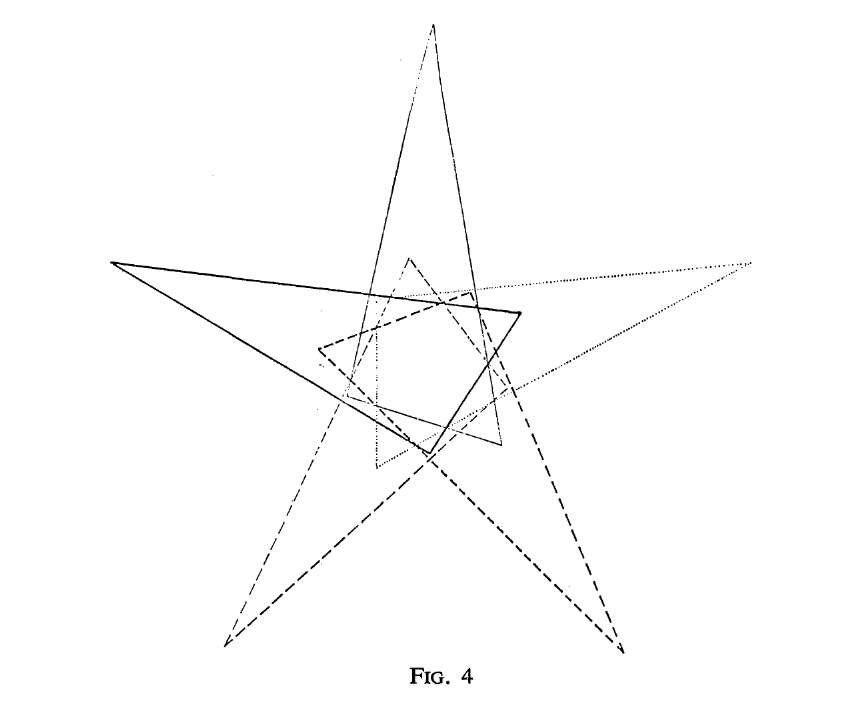A Venn diagram consists of a set of partially overlapping shapes on a plane, arranged in a particular way: for any particular labelling of each of the shapes as "inside" or "outside", it is possible to find a point that is inside all the "inside" shapes and outside all the "outside" shapes.
The most famous Venn diagram is formed out of three circles, as seen in this question. Circles don't work very well for more than three regions, but by using ellipses, it is possible to go up to five shapes, as seen in this question – there are 32 possible ways to choose "inside" and "outside" for each of the ellipses, and for all 32 combinations, you can find a point that's inside or outside each of the ellipses as appropriate.
So my puzzle for you is: do the same thing, but using triangles rather than ellipses. You need to find a way to arrange five triangles, such that for all 32 possible ways to choose "inside" or "outside" for each of the triangles, there is some point that's inside or outside each of the triangles as appropriate (meaning that the triangles need to split the plane into at least 32 regions). The triangles don't need to be any particular shape or size (e.g. they don't have to be equilateral), and they don't have to be the same shape or size as each other; any shape or size of triangle will do.
(Note: the result probably won't be a "perfect" Venn diagram – all the solutions I've found have more than 32 regions, with some of them duplicating each other, but with all 32 combinations present in the diagram somewhere, and the problem merely requires there to be at least one region for all 32 possibilities; it doesn't require there to be only one region per possibility. I don't know the minimum possible number of regions with which it's possible to solve the problem, but suspect it's more than 32.)




